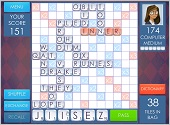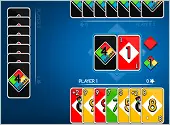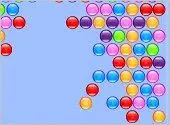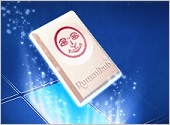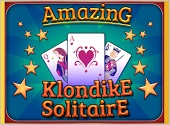- Home
- Better Memory
- Memory Skills
- Link Method
The Link Method: Chain Your Way to Better Memory
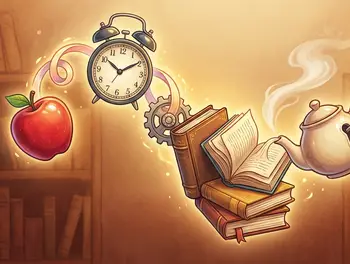
In 1969, psychologists Gordon Bower and Michal Clark ran an experiment that surprised even them. They gave participants lists of random words to memorize. One group used standard study methods. The other group wove the words into short stories.
The results weren't close. When tested on all the lists at once, the story group recalled 93% of the words. The control group? Just 13%. That's a seven-fold difference from the same study time, just by changing how information was connected.
That's the Link Method in action: connecting items through a chain of vivid mental images, each one triggering the next. It's one of the oldest memory techniques, and research confirms it's remarkably effective.
What the Link Method Is
The Link Method creates a chain of mental images where each item connects to the next. You transform the items you want to remember into vivid pictures, then link them together through action, interaction, or a short narrative.
Imagine you need to remember: apple, bread, milk. Instead of repeating the words, you might picture a giant apple smashing down onto a loaf of bread, then the bread being kicked like a football by a huge milk carton. The images are connected. When you recall the apple, the bread naturally follows. The bread triggers the milk.
That's the core idea. The chain provides structure. The vivid images provide memorability. Together, they transform a random list into something your brain actually holds onto.
Why It Works: The Science
The Link Method works because it leverages several principles that cognitive scientists have studied extensively.
Dual coding. When you create a mental image of an apple smashing bread, you're encoding the information twice: once as the word "apple" and once as the picture. Allan Paivio's dual coding theory explains why this matters. Information processed through both verbal and visual channels creates redundant memory traces. If one fades, the other remains. Visual and verbal memories support each other.
Narrative structure. Your brain is wired for stories. Random facts are hard to remember; the same facts embedded in a sequence are much stickier. The Link Method creates a mini-narrative: first this happened, then that happened, then this. The Bower and Clark study demonstrated just how powerful this effect can be.
Distinctiveness. Ordinary images fade into the background. Bizarre ones stand out. Research by McDaniel and Einstein found that unusual images are recalled significantly better than common ones, at least when they appear alongside ordinary material. When your milk carton is kicking bread like a soccer ball, your brain flags that as unusual and encodes it more deeply.
Active processing. Creating the images requires effort. You're not passively reading; you're actively constructing mental scenes. This engagement strengthens encoding. The images you create yourself stick better than images someone gives you.
How to Use the Link Method: Step by Step
Here's the basic process:
1. Start with a header image. Create a vivid image that represents the type of list you're memorizing, connected to the first item. If it's a grocery list, you might picture your first item (red apples) smashed onto a shopping cart. This gives you a starting point for recall.
2. Link each item to the next. Create a memorable image connecting item one to item two, then item two to item three, and so on. Each image involves just two items: the one you just encoded and the next one in your list.
3. Make the images vivid and unusual. Don't just picture items sitting next to each other. Have them interact. Action is memorable. Exaggeration is memorable. The stranger the scene, the better it sticks.
4. Move through quickly. You don't need to labor over each image. A few seconds per link is usually enough. The technique works because of the structure, not because you spend ten minutes perfecting each mental picture.
5. Recall by walking through the chain. When you need to retrieve the list, start with your header image and follow the links. Each image triggers the next.
Example: Memorizing a Shopping List
Let's walk through a complete example. Suppose you need to remember:
6 red apples, large loaf of bread, carton of milk, bar of foamy soap, pair of yellow socks, packet of chocolate biscuits
Here's how to build the chain:
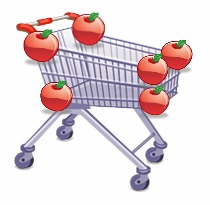 Link 1: Apples on a shopping cart | Header image. This is a grocery list, so I picture a metal shopping cart. To link it to my first item, I imagine six red apples smashed onto the wires of the cart, juice running down. The bright red color is vivid. The smashing is action. Now "grocery list" leads directly to "red apples." |
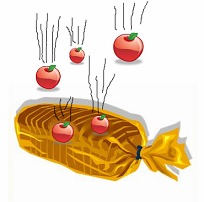 Link 2: Apples raining on bread | Apples → Bread. I picture a rain of red apples smashing down from the sky onto a giant loaf of bread, crushing it. The loaf is enormous, house-sized. The scale is exaggerated. The action (apples falling, bread crushing) makes it memorable. Now apples lead to bread. |
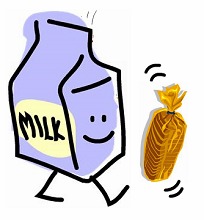 Link 3: Milk carton kicks the bread | Bread → Milk. I imagine a giant carton of milk with legs, kicking the loaf of bread like a football. Picture an entire team of milk cartons running down a field, punting bread loaves. The image is absurd, which is exactly why it works. Bread now triggers milk. |
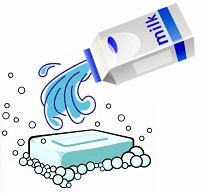 Link 4: Milk turns into soap | Milk → Soap. Someone pours from the milk carton, but instead of milk, white foamy soap comes out. The soap bubbles up everywhere. The surprise element (expecting milk, getting soap) makes this stick. Milk now leads to soap. |
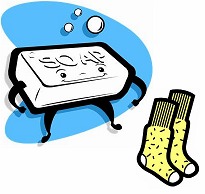 Link 5: Soap Man wears yellow socks | Soap → Yellow socks. A giant "Soap Man" character (made entirely of foamy soap) sits down and pulls on a pair of bright yellow socks. Why? Maybe he doesn't want his feet getting dirty. The image is silly, which helps. Soap now triggers socks. |
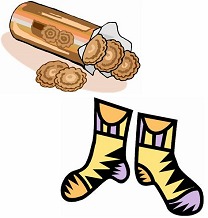 Link 6: Biscuits in my socks | Socks → Chocolate biscuits. I picture pouring an entire packet of chocolate biscuits into my own socks, then putting them on and walking around. The crunching underfoot, the chocolate smearing. I feel it. Socks now complete the chain at chocolate biscuits. |
Recalling the List
Now you're at the grocery store. How do you recall what you need?
Start with your header. You know this is a grocery list, which makes you think of a shopping cart. The shopping cart has red apples smashed onto it. That's your first item: grab the apples.
Apples make you think of the rain of apples crushing a giant loaf of bread. Second item: bread.
The bread reminds you of the milk carton kicking it like a football. Third item: milk.
Pouring the milk produces foamy soap instead. Fourth item: soap.
The Soap Man is putting on his yellow socks. Fifth item: socks.
And you've poured chocolate biscuits into your own socks. Sixth item: biscuits.
The chain pulls you through. Each image triggers the next automatically.
What Makes a Good Link
Not all mental images are equally memorable. Here's what works:
Action. Static scenes fade. Motion sticks. Have items crash, kick, pour, explode, chase, or transform. The verb matters more than the nouns.
Exaggeration. Make things giant or tiny, numerous or singular. A single dog is forgettable. A dog the size of a building, or a thousand tiny dogs swarming, is not.
Bizarreness. Unusual images stand out. A milk carton with legs, kicking things? Weird enough to remember. Milk sitting next to bread? Too ordinary.
Sensory details. The more senses you engage, the stronger the encoding. Hear the crunch of biscuits. Feel the juice running. See the bright colors. Smell the soap.
Personal involvement. Putting yourself in the scene often helps. "I'm pouring biscuits into my socks" is more vivid than watching someone else do it.
Interaction. The two items need to interact meaningfully. Just placing apple next to bread doesn't create a link. Having apples rain down and crush the bread does.
When to Use the Link Method
The Link Method is best for shorter, sequential lists where you don't need to recall items out of order.
Shopping lists. The classic use case. You can memorize 10-15 items in a few minutes and recall them at the store.
Daily itineraries. I sometimes use the Link Method to remember my sequence of tasks or appointments for the day. First the dentist (picture giant teeth), then the bank (vault door), then pick up dry cleaning (clothes flying). Each triggers the next.
Speeches and toasts. You don't need to memorize every word. Create links for your main points, and the details fill in naturally when you speak. For a detailed example of this, see How to Memorize a Toast.
Key points from reading. After reading an article or chapter, link the main ideas together. This helps you reconstruct the argument later.
Sequences and procedures. Steps that must happen in order work well with the Link Method. Each step triggers the next.
Link Method vs. Memory Palace
Both techniques use visualization, but they're structured differently.
The Memory Palace uses a spatial framework: you place items at specific locations along a familiar route. It's more powerful for large amounts of information and gives you random access (you can jump to any location). But it requires a pre-built palace, which takes setup time.
The Link Method uses a narrative framework: each item connects directly to the next. It's simpler to learn, faster to deploy, and works well for shorter lists. But it's sequential. If a link breaks mid-chain, you might lose everything after it.
Use the Link Method when: You have a shorter list (roughly 5-15 items), need to memorize quickly with no preparation, or the sequential order is all that matters.
Use the Memory Palace when: You have a longer list, need random access to items, or plan to store information long-term. The palace gives you more structure and durability.
Many people use both. The Link Method for quick daily needs. The Memory Palace for serious memorization projects.
Common Challenges
What if a link breaks? If you forget one image, you might lose the rest of the chain. Prevention: make your images vivid enough that they don't fade. Recovery: sometimes skipping ahead or thinking about the general category (what else was on my grocery list?) helps you pick up the chain again. For important lists, you can create "checkpoint" images at every fifth item as backup anchors.
What about aphantasia? Some people have difficulty forming mental images. If that's you, the technique may still work using spatial or conceptual associations rather than vivid pictures. You don't need to "see" the milk carton kicking bread like watching a movie. A sense of the relationship, the action, the absurdity may be enough. Many people with aphantasia have reported success with modified approaches.
Similar items in a list? If your list has multiple similar items (three different vegetables, for instance), make sure each has a distinctive feature in your images. A carrot might be bright orange and pointy, a potato might be huge and lumpy, a broccoli might be a forest of tiny trees. Exaggerate the differences.
A Note on Retention
The Link Method is an encoding technique. It gets information into your memory effectively. But encoding is only half the battle. Without review, even well-encoded memories fade over time.
For a shopping list you'll use today, that's fine. The Link Method gives you reliable short-term recall.
For information you want to remember long-term, combine the Link Method with spaced repetition. Review your chains at strategic intervals, and they'll stay accessible indefinitely. The Link Method handles how you encode; spacing handles how you retain.
Getting Started
The only way to learn this technique is to try it. Right now, think of five things you need to do today or five items you need to buy. Spend two minutes creating a linked chain of images. Then, an hour from now, see if you can recall all five by walking through the chain.
Most people are surprised by how well it works, even on the first attempt. The images feel silly, but they stick. That's the point.
Once linking becomes natural, you'll find uses for it everywhere. Meeting agendas. Presentation outlines. Recipe ingredients. Anything sequential becomes easier to hold in mind.
The technique has worked for thousands of years because human brains haven't changed. We're still wired to remember stories and vivid images. The Link Method puts that wiring to work for whatever you need to remember.
References
I've selected these sources for their relevance to understanding why the Link Method works. Here's what each contributes:
1. Bower, G.H., & Clark, M.C. (1969). "Narrative stories as mediators for serial learning." Psychonomic Science, 14(4), 181-182. ResearchGate
Researcher's Note: This elegant study showed that narrative chaining produces dramatically better recall than rote memorization. Participants learned 12 lists of 10 words each. Those who wove words into stories recalled 93% on a later test; controls recalled just 13%. The seven-fold improvement demonstrates the power of linking items through narrative structure. This is the foundational evidence for why the Link Method works.
2. Paivio, A. (1991). "Dual coding theory: Retrospect and current status." Canadian Journal of Psychology, 45(3), 255-287. ResearchGate
Researcher's Note: Paivio's dual coding theory explains why visualization aids memory. We process verbal and visual information through separate channels, and engaging both creates redundant memory traces. This is why transforming words into mental images strengthens encoding: you're essentially storing the information twice. The theory provides the cognitive foundation for understanding why the Link Method (and other visualization techniques) work.
3. McDaniel, M.A., & Einstein, G.O. (1986). "Bizarre imagery as an effective memory aid: The importance of distinctiveness." Journal of Experimental Psychology: Learning, Memory, and Cognition, 12(1), 54-65. ResearchGate
Researcher's Note: This series of experiments established that bizarre imagery enhances memory when it appears alongside ordinary material. The key is distinctiveness: unusual images stand out against a background of common ones and get encoded more deeply. This explains why the Link Method emphasizes strange, exaggerated, action-filled images rather than ordinary scenes. The weirder the image, the more it pops out in memory.
4. Dunlosky, J., Rawson, K.A., Marsh, E.J., Nathan, M.J., & Willingham, D.T. (2013). "Improving Students' Learning With Effective Learning Techniques." Psychological Science in the Public Interest, 14(1), 4-58. ResearchGate
Researcher's Note: This comprehensive review evaluated ten learning techniques for their effectiveness. While focused primarily on study strategies, it provides useful context for understanding where mnemonic techniques fit in the broader landscape of learning tools. The authors note that imagery-based mnemonics can be effective for certain types of material, particularly when memorizing lists or paired associates.
Published: 04/01/2008
Last Updated: 01/10/2026
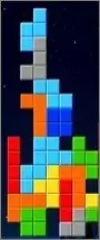
Newest / Popular
Multiplayer
Board Games
Card & Tile
Concentration
Math / Memory
Puzzles A-M
Puzzles N-Z
Time Mgmt
Word Games
- Retro Flash -
Also:
Bubble Pop
• Solitaire
• Tetris
Checkers
• Mahjong Tiles
•Typing
No sign-up or log-in needed. Just go to a game page and start playing! ![]()
Free Printable Puzzles:
Sudoku • Crosswords • Word Search

Hippocampus? Encoding? Spaced repetition?
Look up memory or brain terms in the A-Z glossary of definitions.

